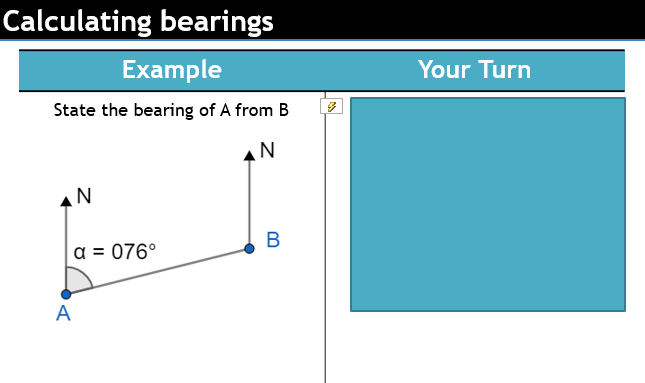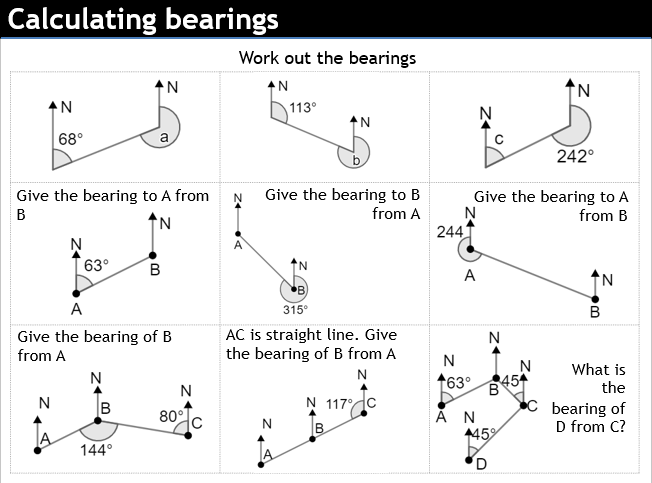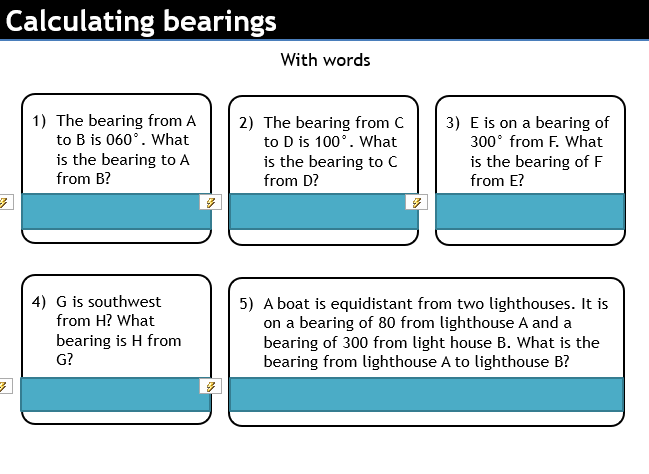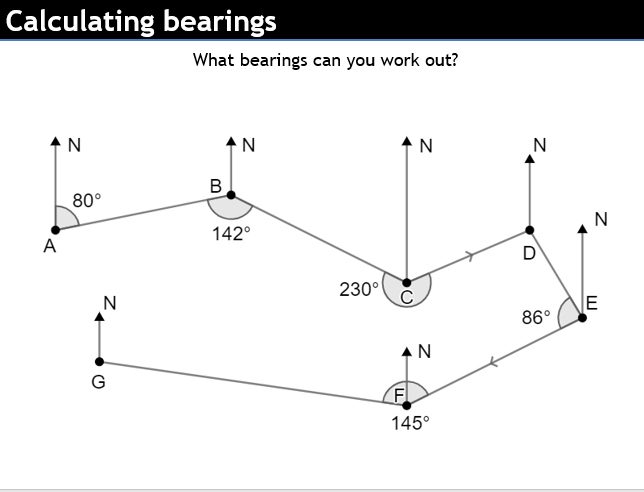Bearings is a topic that I’ve taught really badly in the past. It’s due to a number of factors (teaching measuring, use of worksheets) but mainly I think due to a lack of thinking on my part about the different processes and skills contained within bearings work.
I often lumped all of bearings together, maybe throwing a few calculation questions around as they’re not seen too much at GCSE. This was clearly a mistake.
In my measuring and constructing bearings lesson I tried to really atomise the concepts involved in bearings as much I could and sequence the lesson in a much more thoughtful way.
I’ve tried to do the same here with my calculating bearings lesson. It mainly covers question types like the following.

But I tried to think about what challenges pupils could have. Pupils could have different angles given. They could have questions that require them to remember that a bearing is a three-figure value. There could be more than one bearing. My attempt to look at these question types is below.

Looking at these, there’s a few things I like and a few things I don’t.
I’ve managed to build in a bit of variation so that students have to think about the angle they’re trying to find. Maybe there could have been some more straightforward questions to build confidence first, though. I also tink it’s a little crowded and messy from a visual standpoint, but I found it very hard to make it look any nicer whilst still being readable.
I took a lot of inspiration from this excellent solvemymaths sheet.
I also added some worded questions.

And this

I love the question ‘what can you work out?’ when it comes to angles. It really does make such a huge difference in how student approach their work.
